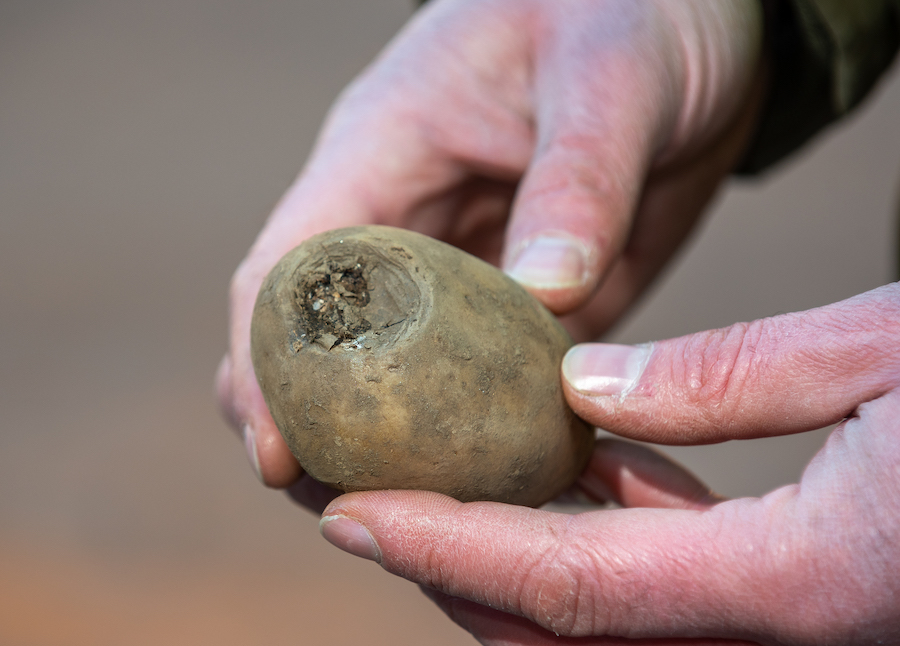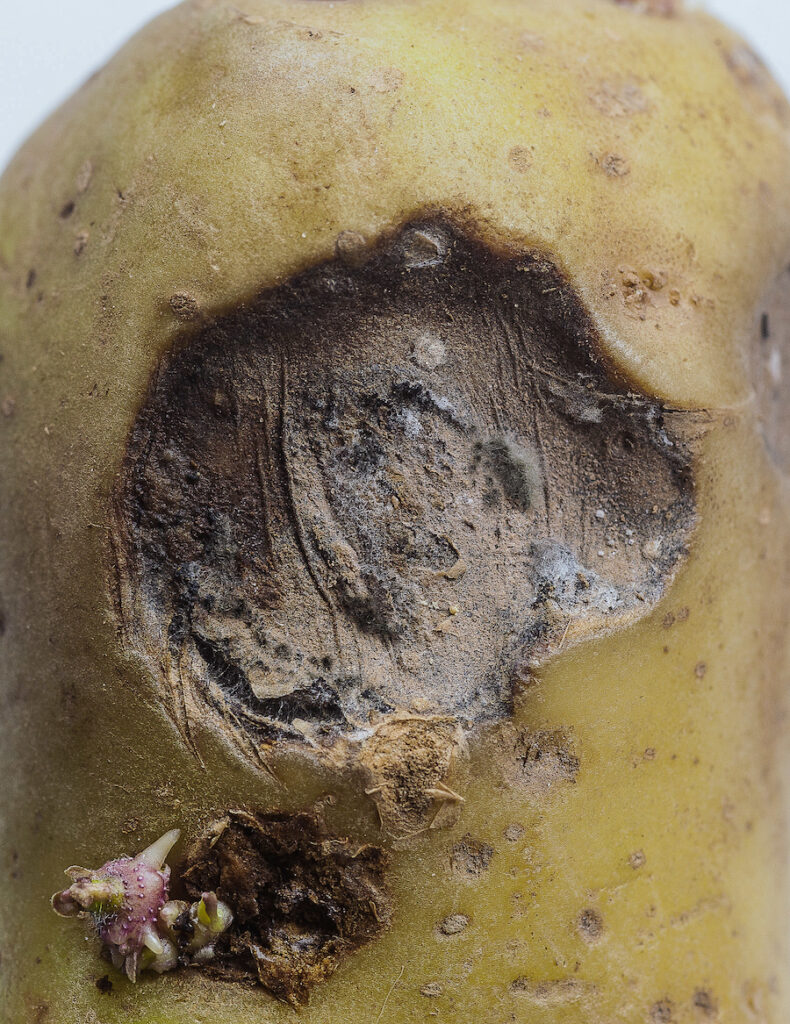Potato seed: Grab early disease suppression opportunity
3rd January 2024
Seed potato producers are being urged to treat disease-susceptible stocks with a fungicide during the first grading window after the tricky harvest hindered earlier applications.

It has been a challenging season in all seed growing areas of the UK in 2023, with regular rainfall leading to some wet and sticky harvesting conditions late in the summer.
With producers keen to get crops dried and cured, few applied an early fungicide seed treatment to suppress storage diseases like dry rot, gangrene, skin spot and silver scurf before store loading.
There is also apprehension about treating the whole crop, as seed tuber treatments are not approved for use on ware potatoes, and this restricts the ability of seed producers to sell oversize seed or “tops” later on.

Fungicide concerns
The lack of fungicide use this year is a concern for independent potato consultant Paul Overton, who notes that many popular potato varieties are susceptible to dry rot and gangrene, and both have been on the rise in recent years.
“The focus at the moment is inevitably on soft rots because of the ideal conditions for bacterial infection during the growing season.
“However, we are consistently seeing more dry rot and gangrene and they account for more of the throw out percentage at grading than people realise.
“There are no silver bullets. Pre-planting treatments applied later are stronger on rhizoctonia, so will have little impact – it’s risky to rely on those to get you out of trouble.”
Susceptible varieties
Paul says an application of Gavel (imazalil) at the first opportunity is recommended on dry rot susceptible varieties, and for most this will be imminent at first grading, when seed is split into saleable seed fractions and tops.
Treatment is especially important for pre-basic producers, as it suppresses disease in the earliest field generations, reducing proliferation further down the multiplication chain.
“In the riskiest situations, mixing Gavel with Storite Excel (thiabendazole) can also help and it’s also a good anti-resistance strategy to have two actives in the tank,” notes Paul.
He adds that applying to clean, dry tubers over a correctly set up and calibrated roller table will maximise coverage and subsequent disease suppression.
Boxes should go back into a well-ventilated store straight after treatment for drying.
“The seed treatment application advice on Certis Belchim’s Tubercare website is the guide to getting things right,” concludes Paul.

